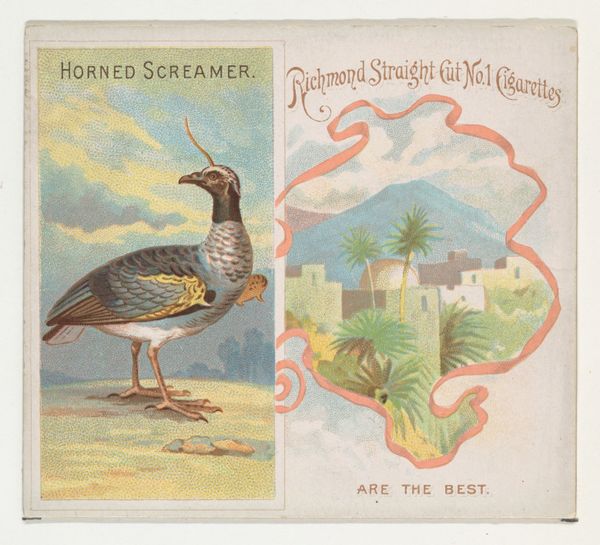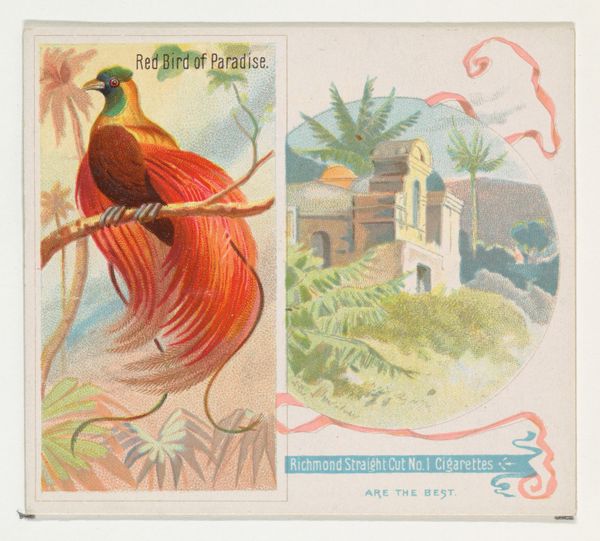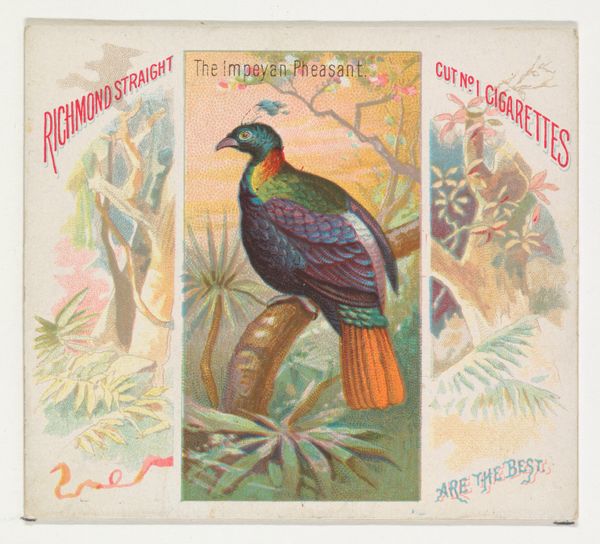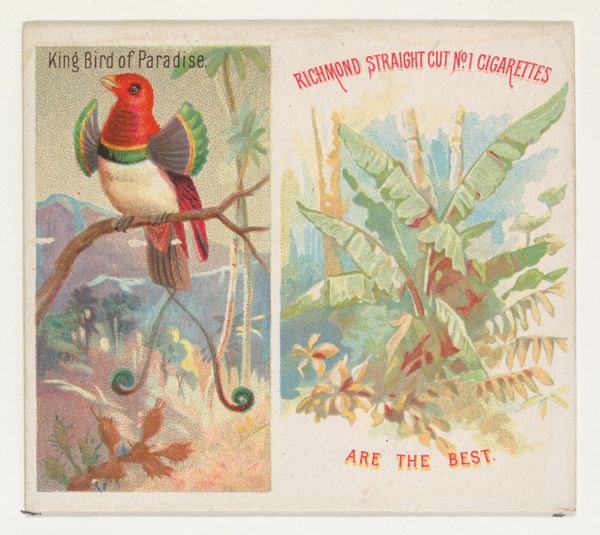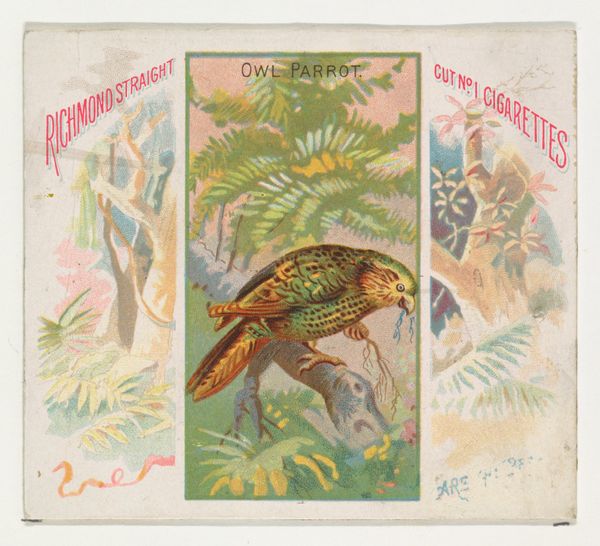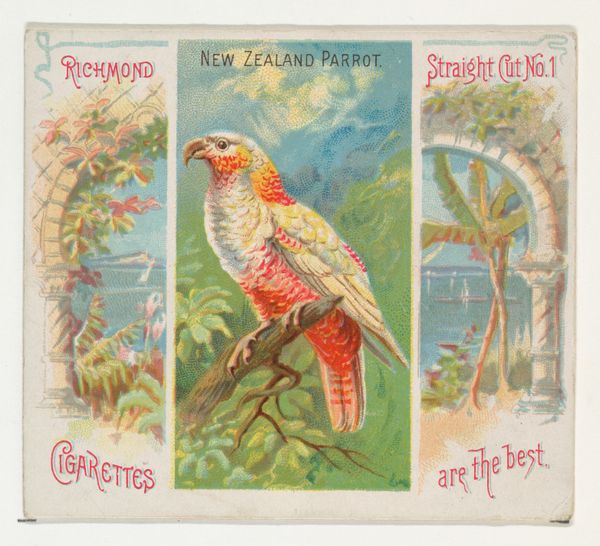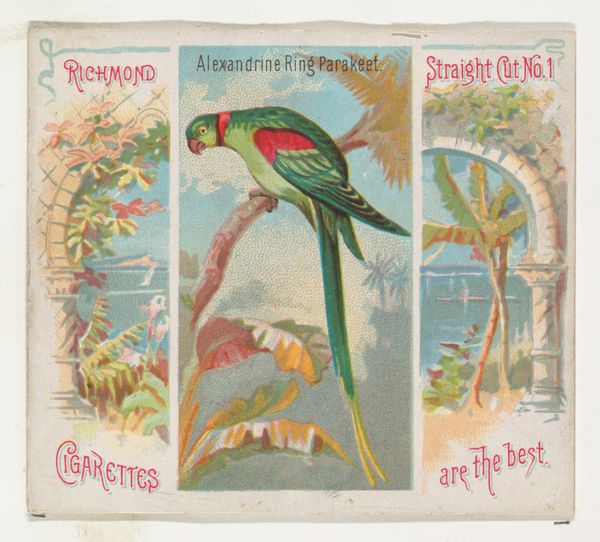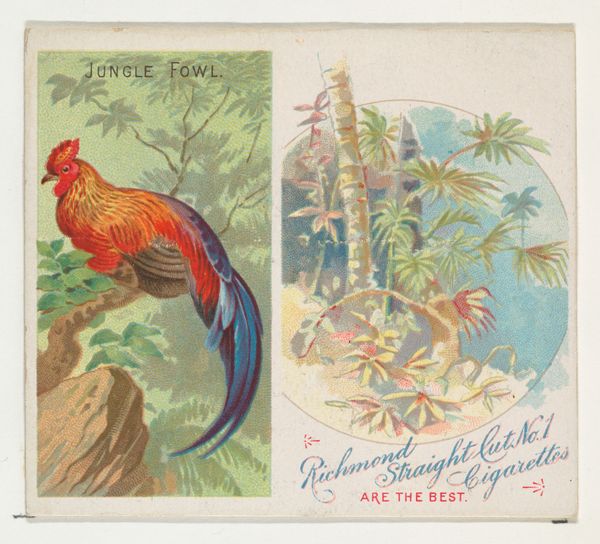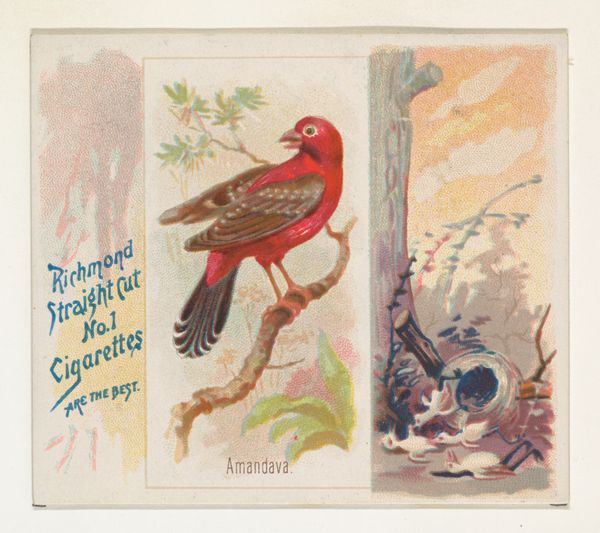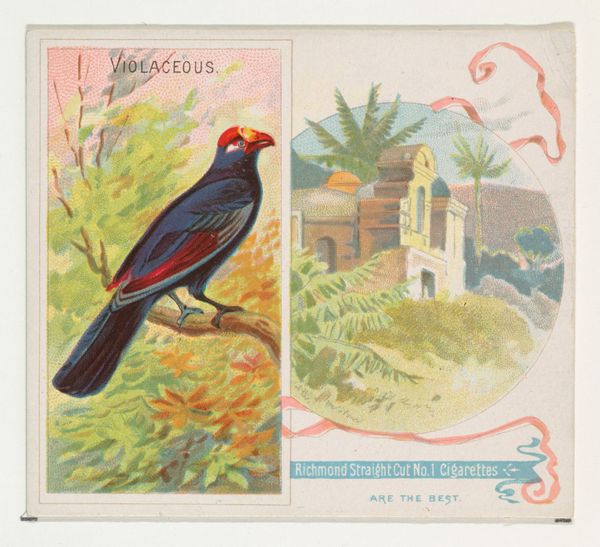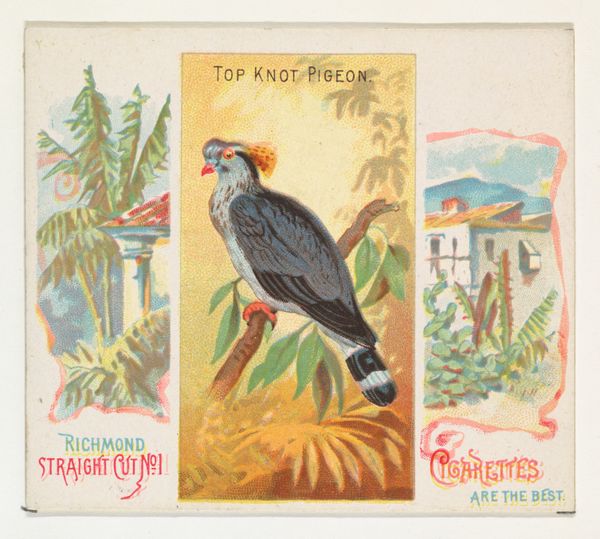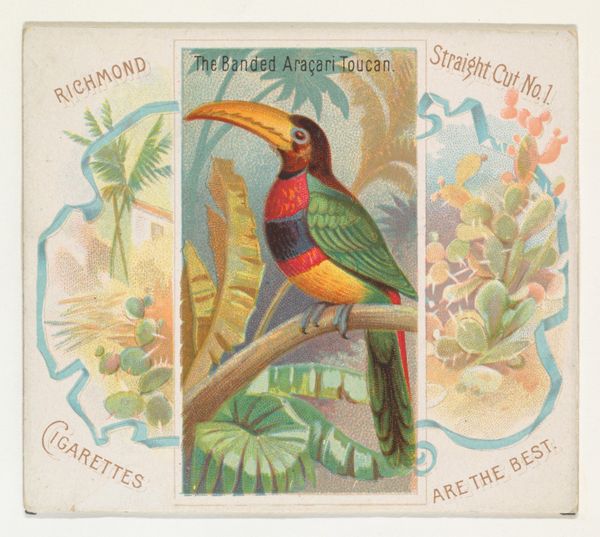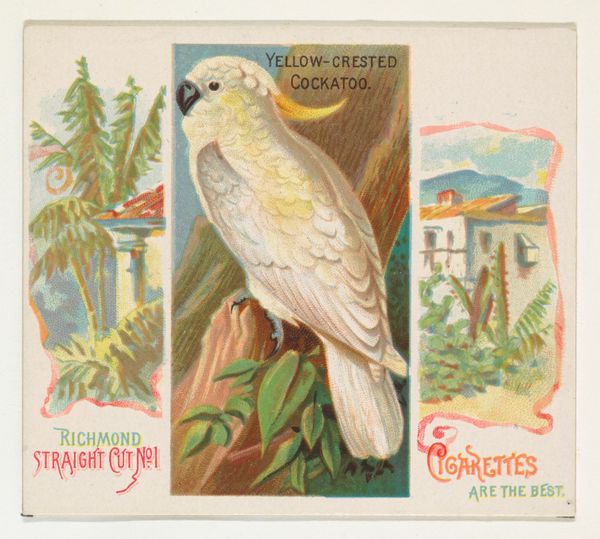
New Zealand Parrot, from Birds of the Tropics series (N38) for Allen & Ginter Cigarettes 1889
0:00
0:00
#
water colours
# print
#
coloured pencil
#
naive art
Dimensions: Sheet: 2 7/8 x 3 1/4 in. (7.3 x 8.3 cm)
Copyright: Public Domain
Editor: Here we have "New Zealand Parrot" from the "Birds of the Tropics" series, made around 1889 as a print with colored pencil by Allen & Ginter. I'm immediately struck by the contrast: on the left, a vivid, almost hyper-real parrot, and on the right, what seems like a landscape rendered with much softer colors. What do you see in this piece? Curator: What immediately captures my attention is the blatant Orientalism. Here we have an exoticized bird, used to market cigarettes, which in itself is wrapped up in histories of colonialism and trade. This piece is more than just a pretty picture; it's a commercial object embedded in a web of power dynamics. Notice how the parrot is carefully rendered, almost fetishized, alongside a vaguely "exotic" landscape that romanticizes some other place, selling you not just a product but a lifestyle and worldview complicit in imperialism. What is a parrot from New Zealand doing next to a vaguely "Middle-Eastern" scene? Editor: That's a fascinating way to look at it! I hadn't considered the imperial context so directly. The landscape, which I found less engaging, now seems deliberately vague, just serving as a backdrop to sell a Western idea of the Orient. So the art becomes a vehicle to support very skewed power relationships... Curator: Exactly. The vibrant detail of the bird serves to underscore the Western gaze and how it can highlight some people while distorting others to establish hierarchy. Editor: This completely reframes how I understand the piece. It’s unsettling to realize how such an ostensibly harmless image participated in harmful dynamics. I never knew that marketing and Orientalism went so closely hand-in-hand at this time. Curator: And it prompts us to be critically aware of the messages embedded in everyday imagery, especially those rooted in historical power imbalances.
Comments
No comments
Be the first to comment and join the conversation on the ultimate creative platform.
